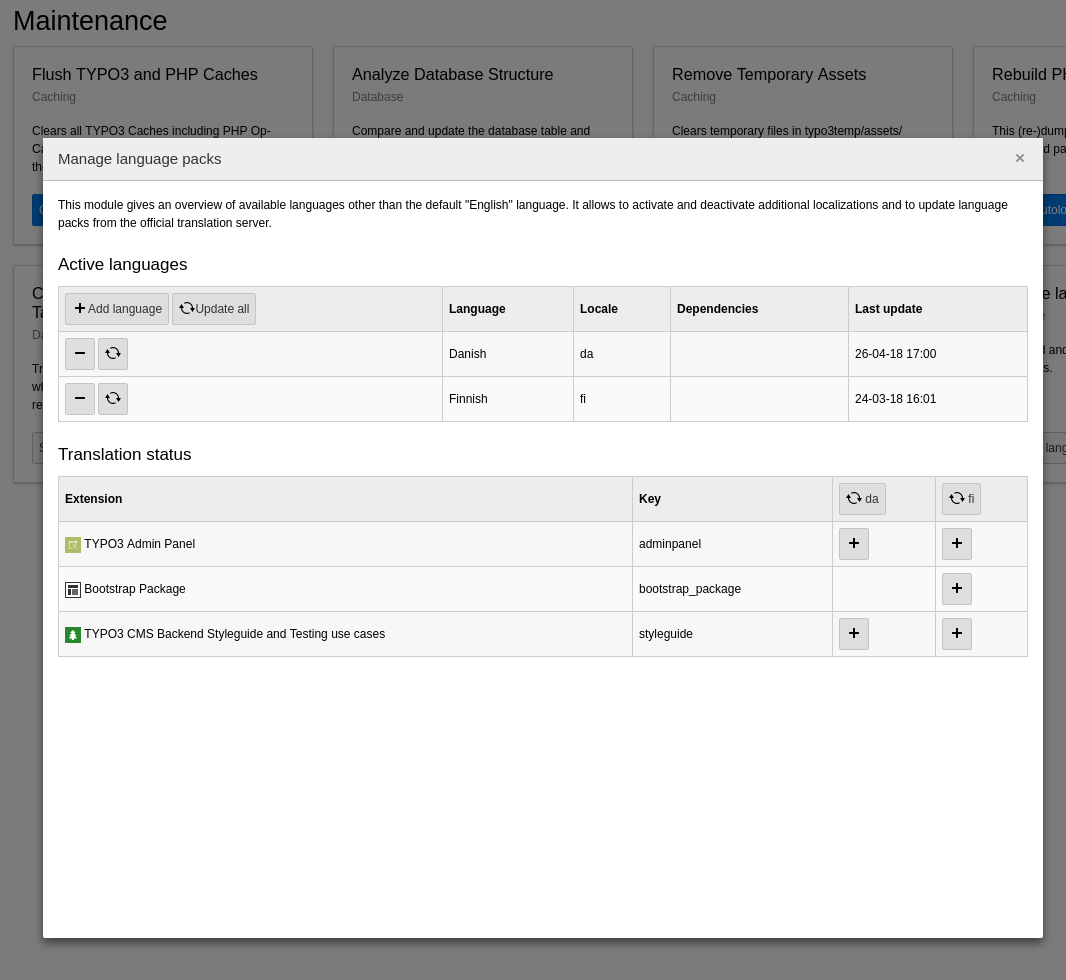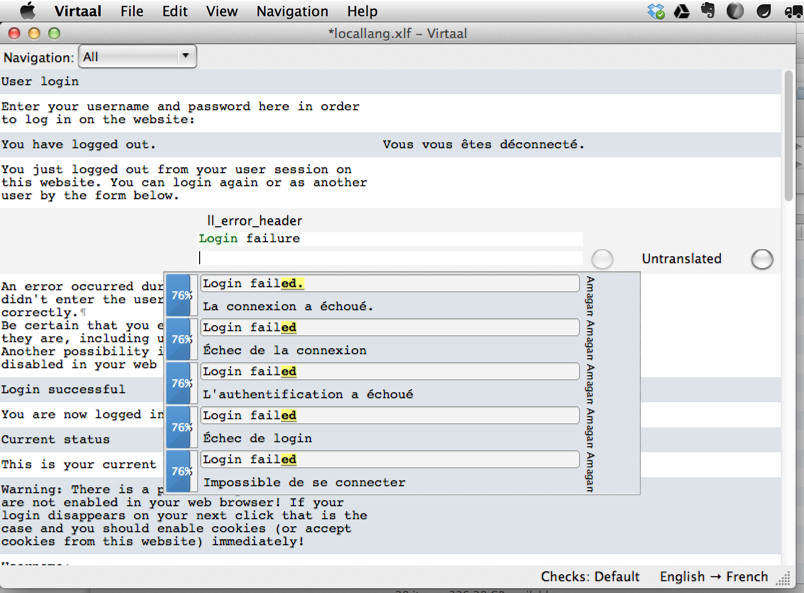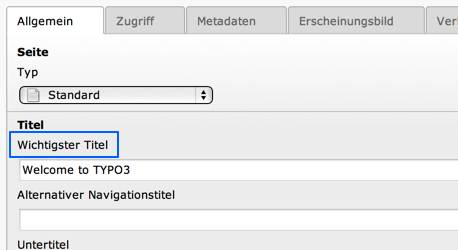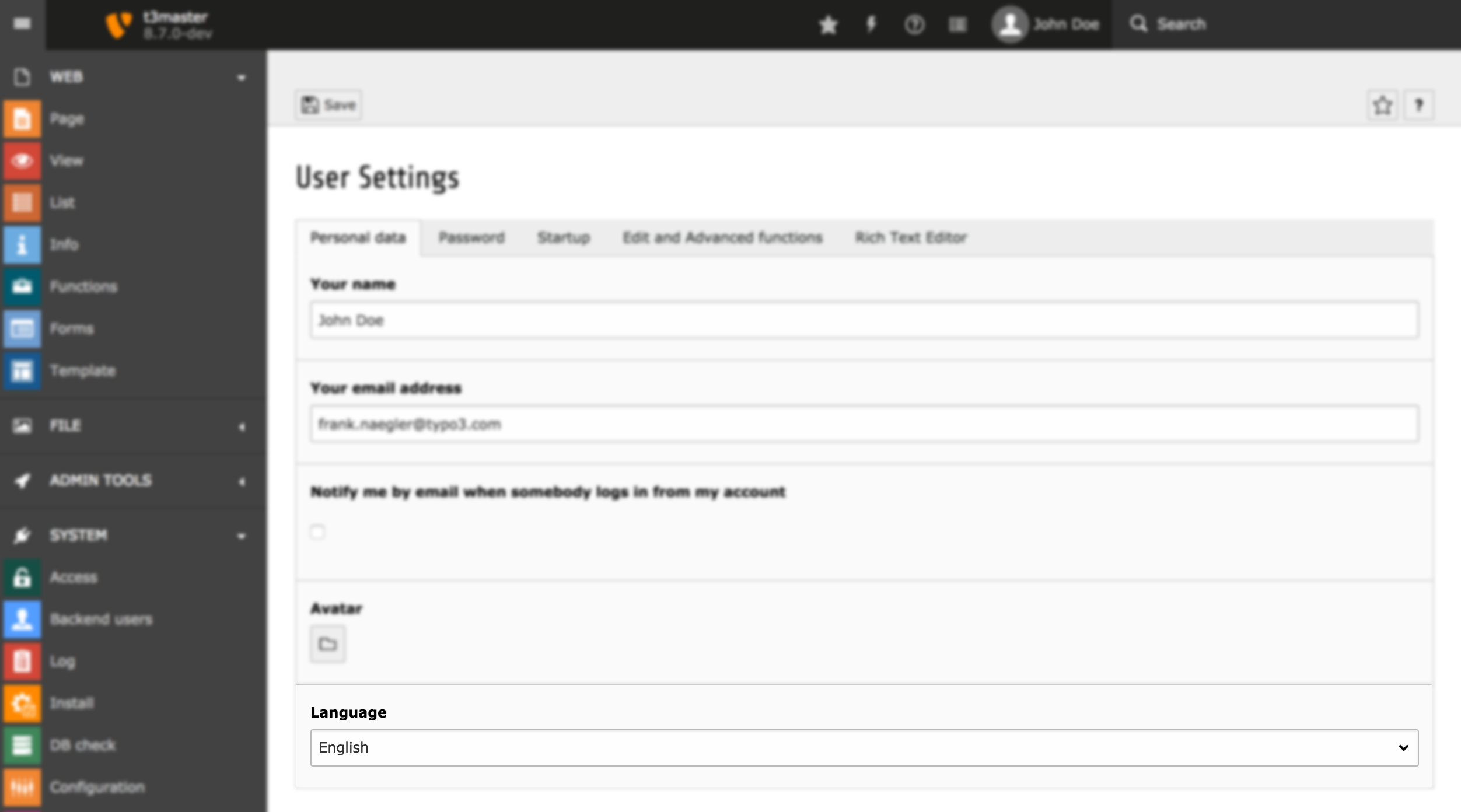Attention
TYPO3 v10 has reached end-of-life as of April 30th 2023 and is no longer being maintained. Use the version switcher on the top left of this page to select documentation for a supported version of TYPO3.
Need more time before upgrading? You can purchase Extended Long Term Support (ELTS) for TYPO3 v10 here: TYPO3 ELTS.
Managing Translations¶
This sections highlights the different ways to translate and manage XLIFF files.
Fetching Translations¶
The interface of the Install Tool in Admin Tools > Maintenance > Manage language packs allows to manage the list of available languages to your users and can fetch and update language packs of TER and core extensions from the official translation server. The module is rather straight forward to use and should be pretty much self explanatory. Downloaded language packs are stored in getLabelsPath().

The Languages module with some active languages and status of extensions language packs¶
Language packs can also be fetched using the command line.
/path/to/typo3/bin/typo3 language:update
Translating Locally¶
Using Virtaal, it is possible to translate XLIFF files locally. Virtaal is an open source, cross-platform application.

Translating with Virtaal, with suggestions from other software¶
Translating files locally is useful for extensions which are not meant to be published or for creating custom translations.
Custom Translations¶
The $GLOBALS['TYPO3_CONF_VARS']['SYS']['locallangXMLOverride'] allows to
override both locallang-XML and XLIFF files. Actually this is not just about translations.
Default language files can also be overridden. In the case of XLIFF files, the
syntax is as follows (to be placed in an extension's ext_localconf.php file):
$GLOBALS['TYPO3_CONF_VARS']['SYS']['locallangXMLOverride']['EXT:frontend/Resources/Private/Language/locallang_tca.xlf'][] = 'EXT:examples/Resources/Private/Language/custom.xlf';
$GLOBALS['TYPO3_CONF_VARS']['SYS']['locallangXMLOverride']['de']['EXT:news/Resources/Private/Language/locallang_modadministration.xlf'][] = 'EXT:examples/Resources/Private/Language/Overrides/de.locallang_modadministration.xlf';
The first line shows how to override a file in the default language, the second how to override a German ("de") translation. The German language file looks like this:
<?xml version="1.0" encoding="utf-8" standalone="yes" ?>
<xliff version="1.0">
<file source-language="en" datatype="plaintext" date="2013-03-09T18:44:59Z" product-name="examples">
<header/>
<body>
<trans-unit id="pages.title_formlabel" xml:space="preserve">
<source>Most important tile</source>
<target>Wichtigster Titel</target>
</trans-unit>
</body>
</file>
</xliff>
and the result can be easily seen in the backend:

Custom translation in the TYPO3 backend¶
Important
Please note that you do not have to copy the full reference file, but only the labels you want to translate.
The path to the file to override must be expressed as
EXT:foo/bar/.... For the extension "xlf" or "xml" can be used interchangeably. The TYPO3 Core will try both anyway, but using "xlf" is more correct and future-proof.
Attention
The following is a bug but must be taken as a constraint for now:
The files containing the custom labels must be located inside an extension. Other locations will not be considered.
The original translation needs to exist in getLabelsPath() or next to the base translation file in extensions, for example in
typo3conf/ext/myext/Resources/Private/Language/.
Custom Languages¶
Supported languages describes the languages which are supported by default.
It is possible to add custom languages to the TYPO3 backend and create the translations locally using XLIFF files.
First of all, the language must be declared:
$GLOBALS['TYPO3_CONF_VARS']['SYS']['localization']['locales']['user'] = array(
'gsw_CH' => 'Swiss German',
);
This new language does not need to be entirely translated. It can be defined as falling back to another language, so that only differing labels need be translated:
$GLOBALS['TYPO3_CONF_VARS']['SYS']['localization']['locales']['dependencies'] = array(
'gsw_CH' => array('de_AT', 'de'),
);
In this case we define that "gsw_CH" (which is the official code for "Schwiizertüütsch" - that is, "Swiss German") can fall back on "de_AT" (another custom translation) and then on "de".
The translations have to be stored in the appropriate labels path sub folder
(getLabelsPath()), in this case /gsw_CH.
The very least you need is to translate the label containing the name of the
language itself, so that it appears in the user preferences. In our example this
would be in file /gsw_CH/setup/mod/gsw_CH.locallang.xlf.
<?xml version='1.0' encoding='utf-8'?>
<xliff version="1.0">
<file source-language="en" target-language="gsw_CH" datatype="plaintext">
<header/>
<body>
<trans-unit id="lang_gsw_CH" approved="yes">
<source>Swiss German</source>
<target state="translated">Schwiizertüütsch</target>
</trans-unit>
</body>
</file>
</xliff>

The new language appears in the user preferences¶
Note
Any language will always fall back on the default one (i.e. English) when a translation is not found. A custom language will fall back on its "parent" language automatically. Thus - in our second example of de_AT (German for Austria) - no fallback would have to be defined for "de_AT" if it were just falling back on "de".
